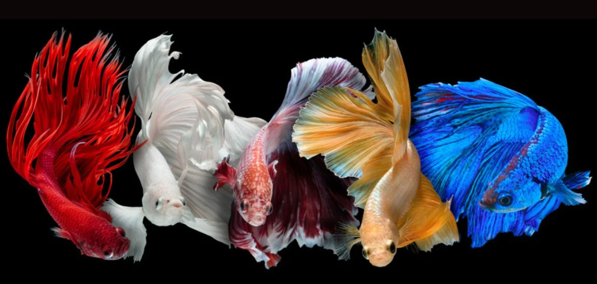If you’re an aquarium enthusiast, you may have considered breeding betta fish. Betta fish, also known as Siamese fighting fish, are renowned for their vibrant colors and graceful fins, making them a popular choice for fish enthusiasts. Breeding betta fish can be a rewarding experience, but it requires careful planning and attention to detail. In this comprehensive guide, we will walk you through the process of breeding betta fish, from selecting suitable breeding pairs to caring for the fry, let’s get started!
Understanding Betta Fish Breeding
Breeding betta fish requires a basic understanding of their reproductive behavior. Betta fish are bubble nest builders, meaning the male builds a nest at the water’s surface using bubbles to protect the eggs. The female then releases eggs into the nest, and the male fertilizes them. Once the eggs hatch, the male guards the fry until they are capable of swimming on their own. It’s important to note that betta fish are known for their aggression, so it’s crucial to be cautious during the breeding process.
Selecting Breeding Pairs
To start breeding betta fish, you need to choose suitable breeding pairs. Look for healthy and mature betta fish with vibrant colors and well-developed fins. It’s advisable to select a male and female with complementary colors to potentially create visually striking offspring. Additionally, consider the overall health of the fish, ensuring they are free from any diseases or deformities. Remember, healthy parents increase the chances of healthy fry.
Preparing the Breeding Tank
Creating the perfect environment for breeding is essential for the success of the betta fish mating process. Set up a separate breeding tank that is at least 10 gallons in size. Equip the tank with a heater to maintain a stable temperature between 78-80°F (25-27°C) and a gentle filtration system to keep the water clean and well-oxygenated. Additionally, add broad-leaved plants or a spawning mop to provide hiding spots for the female and to anchor the bubble nest.
Introducing the Breeding Pair
Before introducing the breeding pair, it’s crucial to condition them individually with a nutritious diet to enhance their fertility and overall health. Place the male betta fish in the breeding tank first and allow him to explore his new surroundings. After a day or two, introduce the female to the tank, ideally using a transparent divider to prevent immediate physical contact. Observe their behavior closely, looking for signs of readiness to breed, such as the male building a bubble nest and the female displaying vertical stripes on her body.
The Breeding Process
Once the breeding pair is ready, it’s time to initiate the breeding process. Remove the transparent divider, allowing the male and female to interact freely. The male will display courtship behaviors such as flaring his fins and making elaborate displays to attract the female’s attention. If the female is receptive, she will respond by displaying submissive behavior, such as lowering her head and curving her body. This dance of courtship can last for several hours or even days until the male leads the female to the bubble nest to deposit her eggs.
Caring for the Eggs
Once the female releases her eggs, the male will swiftly collect them in his mouth and transfer them to the bubble nest. It’s crucial to remove the female from the breeding tank immediately after the spawning process to prevent her from getting injured by the male’s protective behavior. The male will diligently tend to the nest, repairing any damaged bubbles and ensuring the eggs remain safe and secure. During this time, it’s essential to maintain optimal water conditions, keeping the temperature stable and the tank clean to prevent the eggs from developing fungal infections.
Hatching and Raising Fry
After approximately 48-72 hours, the eggs will hatch, and the fry will emerge. At this stage, they are still too fragile to swim freely and will rely on their yolk sacs for nourishment. The male betta will continue to guard the fry, carefully guiding them back to the bubble nest if they stray. Once the fry has absorbed their yolk sacs and started swimming actively, it’s time to remove the male from the tank to prevent him from preying on the fry. Transfer the fry to a separate rearing tank equipped with a gentle filtration system and provide them with suitable food such as finely crushed flakes or specialized fry food.
Common Challenges & Solutions
Breeding betta fish can be a complex process, and it’s not uncommon to encounter challenges along the way. Here are some common issues and troubleshooting tips:
- Aggression between the breeding pair: If the male becomes excessively aggressive towards the female, causing her stress or injury, remove her from the breeding tank immediately.
- Egg fungus: If you notice fuzzy white or green growth on the eggs, it indicates a fungal infection. Remove the infected eggs to prevent the spread of the fungus.
- Poor hatch rate: If a significant number of eggs fail to hatch, it could be due to various factors such as improper water conditions, genetic issues, or inadequate nutrition. Ensure optimal conditions and evaluate the breeding pair’s health.
- Fry cannibalism: In some cases, the male may exhibit cannibalistic behavior towards the fry. If this occurs, promptly remove the male from the tank and provide ample hiding spots for the fry to reduce aggression among siblings.
Where to Find Betta Fish for Sale
If you’re interested in breeding betta fish, finding high-quality breeding stock is essential. Here are some excellent sources where you can find betta fish for sale:
- Local Fish Stores: Visit your local fish stores or aquarium shops. They often carry a variety of betta fish, including different color variations and tail types. Speak with the store staff to inquire about their breeding stock and ensure they have healthy and well-cared-for bettas.
- Online Betta Breeders: The internet has made it convenient to find betta fish for sale from reputable breeders. Many breeders have websites or sell through online marketplaces. Take the time to research and read reviews about the breeders to ensure they have a good reputation for providing healthy bettas.3








